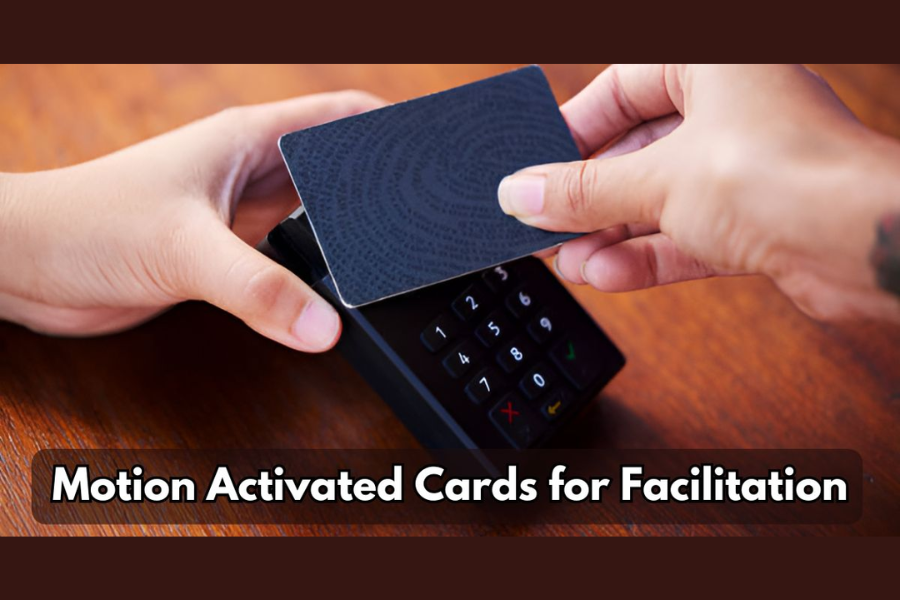Introduction
In today’s rapidly evolving technological landscape, traditional methods are frequently being replaced by innovative solutions that offer greater efficiency and engagement. One such advancement is the motion-activated card, a groundbreaking tool that merges modern technology with the traditional concept of cards. These cards represent a leap forward in how we communicate and interact, enhancing productivity and trust within organizations. In this article, we will explore motion-activated cards, focusing on their benefits, potential drawbacks, and various applications.
Dynamic Facilitation: A Modern Approach to Problem Solving
Dynamic facilitation is a technique designed to help groups address complex issues effectively. It fosters creative and efficient decision-making by breaking away from conventional, structured methods and encouraging diverse perspectives. Unlike traditional approaches that follow rigid processes and predefined agendas, dynamic facilitation empowers participants to explore various viewpoints and uncover innovative solutions. This method is not only beneficial for commercial decision-making but also for personal decision-making, promoting a deeper understanding of problems through multiple perspectives.
Understanding Motion Activated Cards for Facilitation
Motion-activated cards are a contemporary innovation that combines electronic technology with the classic card format to enhance interaction. These cards are equipped with electronic components and sensors that allow them to perform specific tasks in response to physical movements. Typically featuring an LED display or similar component, motion-activated cards can provide interactive feedback and initiate particular actions based on detected movements.
Key Components of Motion Activated Cards
Several essential components work together to ensure the functionality of motion-activated cards:
Motion Sensor The motion sensor is the core component, enabling the card to detect and respond to movement. Common types include:
Gyroscope: Measures rotational movements and provides data on how the card is oriented.
Accelerometer: Tracks the card’s direction and velocity, detecting shakes, tilts, and shifts.
Microprocessor/Motherboard The microprocessor acts as the card’s central control unit, processing information from the sensors and managing the card’s actions. It is crucial for coordinating the card’s responses and ensuring smooth operation.
LED/Display Motion-activated cards often feature an LED display or lights that convey messages or feedback. This visual component enhances the interactive experience by providing immediate responses to movements.
Power Source To operate, motion-activated cards require a power source, typically small batteries. Despite their functionality, these cards are designed to be energy-efficient, minimizing battery consumption.
Applications of Motion Activated Cards
Motion-activated cards have diverse applications across various sectors:
Event Management
Custom Interaction: Event organizers can use motion-activated cards to interact with attendees, displaying customized messages or information.
Networking and Relationship Building: These cards facilitate information exchange and feedback collection, enhancing attendee engagement and networking opportunities.
Educational Settings
Engaging Learning Tools: Motion-activated cards can be used to trigger interactive quizzes or educational activities, making learning more dynamic and engaging.
Gamification: By integrating gamification elements, these cards transform traditional learning into an interactive experience, increasing student participation and interest.
Corporate Events
Training Simulations: Motion-activated cards can enhance corporate training by creating interactive simulations that keep attendees engaged and attentive, improving the effectiveness of training sessions.
Healthcare and Therapy
Patient Engagement: In healthcare settings, motion-activated cards can provide interactive elements that make hospital stays more engaging. They can also be used for reminders and alerts related to medication or routine activities.
Challenges and Considerations
While motion-activated cards offer numerous benefits, there are challenges to address:
Cost The advanced technology used in motion-activated cards can be expensive. However, as technology evolves and becomes more widespread, the cost is expected to decrease, making these cards more accessible.
Interactive Deficiency Not everyone is comfortable with or accustomed to modern information-sharing methods. Some individuals may need time to adapt to using motion-activated cards effectively.
Technical Issues As with any technology, motion-activated cards are susceptible to technical problems. Continued advancements in technology will help mitigate these issues over time.
Privacy Concerns There are concerns about privacy, as motion-activated cards can track movements. To address these concerns, features allowing users to disable real-time tracking could be incorporated.
Conclusion
Motion-activated cards represent a significant advancement in facilitating communication and engagement. By integrating modern technology with traditional card formats, these cards offer dynamic solutions for various applications, from event management to education and healthcare. Despite challenges related to cost, user adaptation, and technical issues, the potential benefits of motion-activated cards make them a valuable tool for enhancing interaction and productivity. As technology continues to evolve, motion-activated cards are likely to become an even more integral part of how we communicate and collaborate.
Discover the latest news and updates on discovertribune




